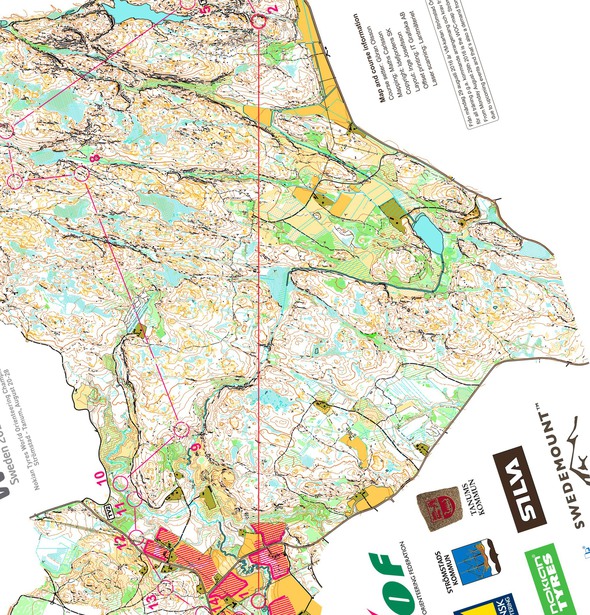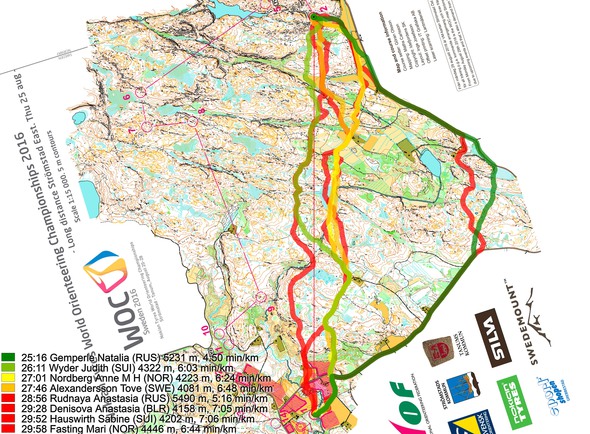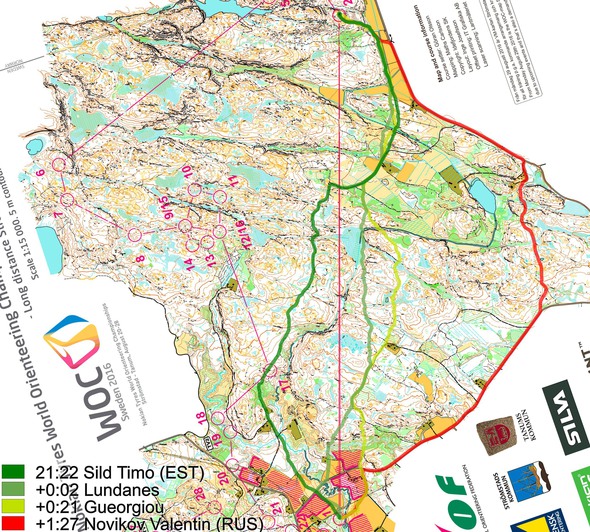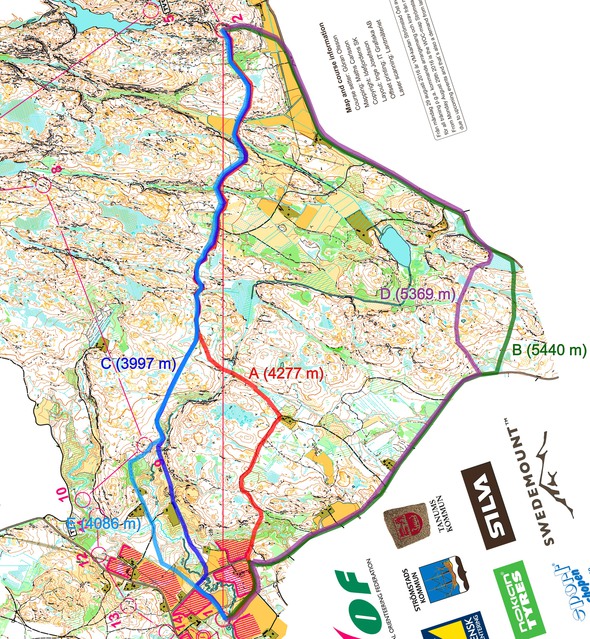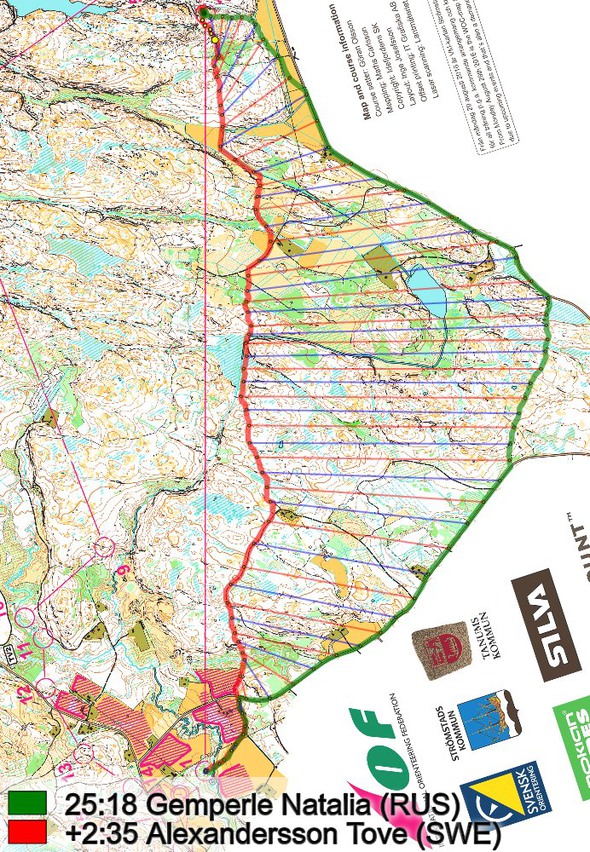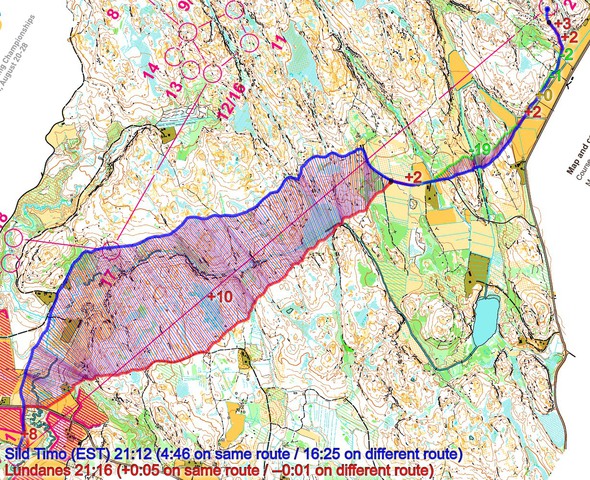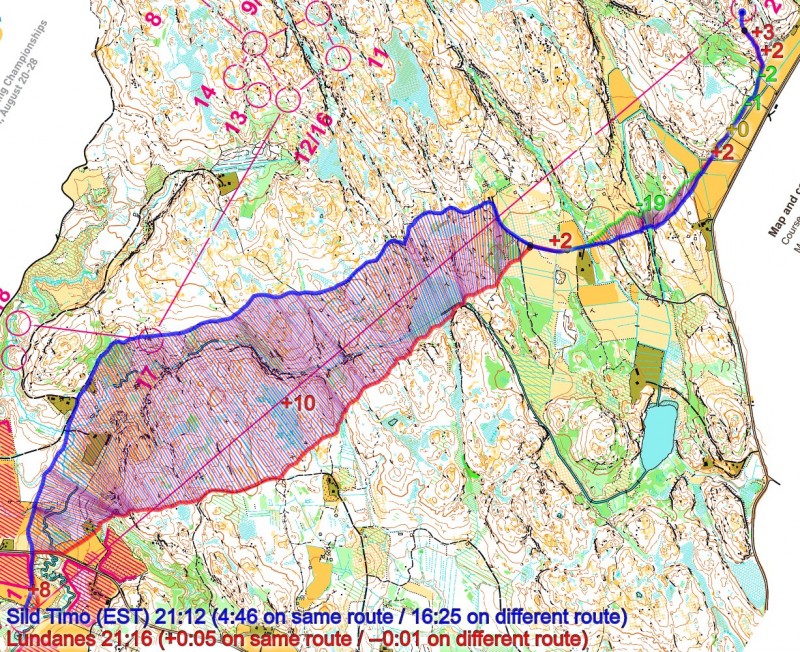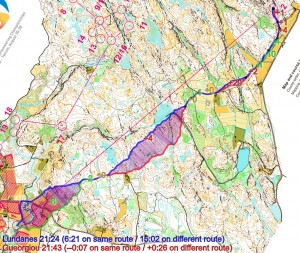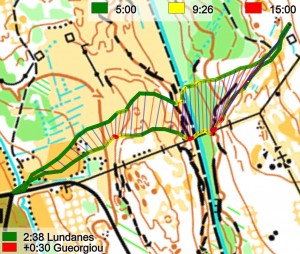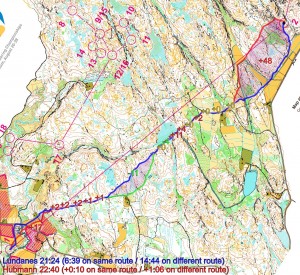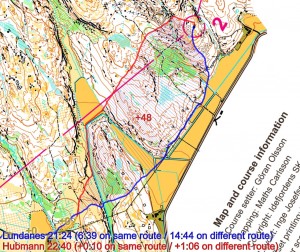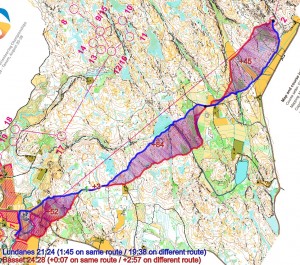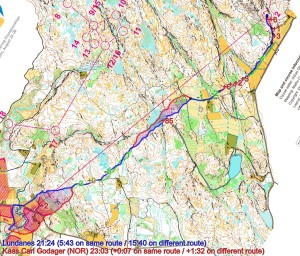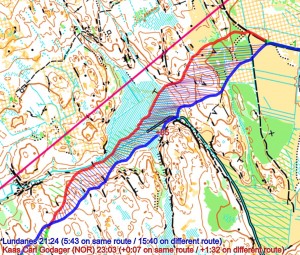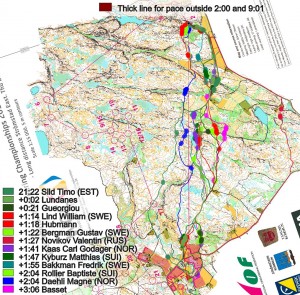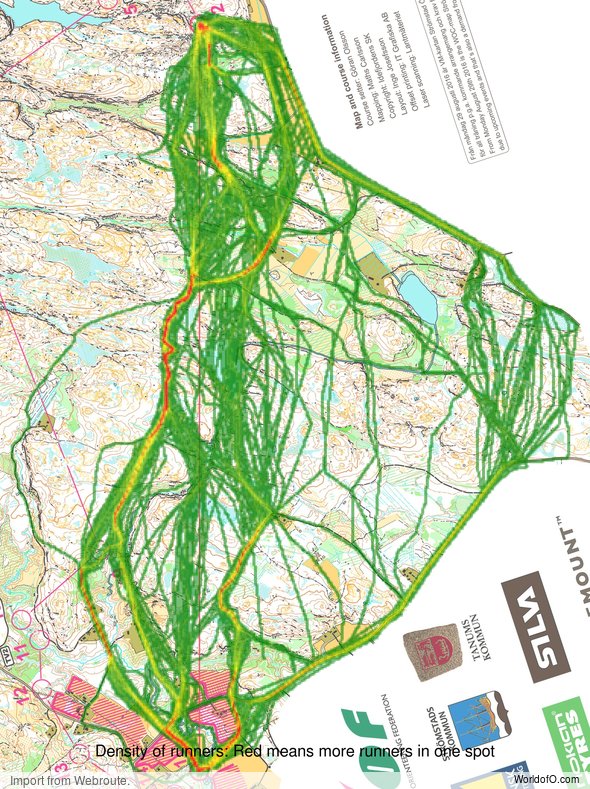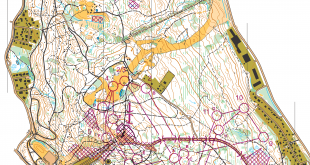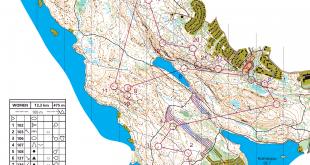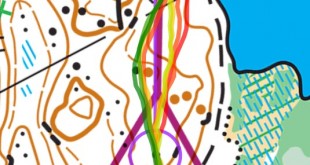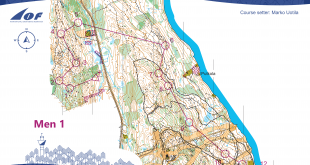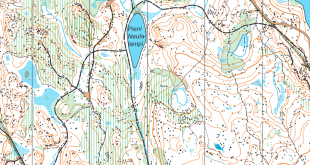Today’s leg in Route to O-Season 2020 brings us to another great long leg from WOC – this time we travel to WOC in Sweden in 2016 to the long leg to the second control.
The leg is as usually first provided without routes – you may take a look at it and think about how you would attack this leg (if the image is too small, you may click on it to get it larger). The leg was used in both the men’s and the women’s course. How would you solve the leg?
Location
You find other maps from the area in omaps.worldofo.com here. See also latest additions in 3DRerun from this area in order to learn more about this terrain type.
Webroute
Next you can draw your own route using the ‘Webroute’ below. Think through how you would attack this leg, and draw the route you would have made. Some comments about why you would choose a certain route are always nice for the other readers.
Then you can take a look at how the runners have solved this leg below. This is a very interesting leg because for the women it was definitely fastest to go around, whereas for the men the fastest route was run straight (none of the top runners chose to run around, though). For most runners it would probably be faster to run around 9 of 10 times, but the very best technical orienteers (who are also physically very fit) would benefit from going straight. The analysis at World of O for this leg was very extensive – I’ll paste it in below for you to read.
Men’s analysis WOC 2016 Long Leg
The runners met the longest leg in the course already to the 2nd control (see above) after 1 minute of running – a 3500 meter long leg where you could choose to either take a long route around on road (5.4 km long), to exploit the paths to the left of the line, or to dive into the tough terrain on a number of straight options.
The three best times on the leg were ran by Timo Sild (left), Olav Lundanes (straight, +0:02) and Thierry Gueorgiou (straight; +0:21, other micro routechoice than Lundanes). Valentin Novikov run the best time on the road around to the right, losing 1:27:
Question 1: Is it a good option to run around to the right?
In the women’s class Natalia Gemperle ran the fastest time by running around to the right on the road, one minute faster than anybody else. None of the favourite runners in the men’s class choose to run around; the best placed runner who took the road around is Valentin Novikov who finished 21st (actually only one other runner took this route; Eric Bone, USA). Novikov, however, was not one of the fastest runners of the day, and also chose a non-optimal route between the roads in the middle of the leg (losing 20-30 seconds). Novikov ran around 3:40 min/km on the road (compared to 3:55 min/km for Gemperle). A top runner like Matthias Kyburz could probably run around 3:20 min/km on the 3.5 km road, i.e. around 1:10 faster for the road part of the leg. With better execution between the roads, a time around Lundanes’/Silds time or even better should be possible. Compared to Kyburz’ timeloss of 1:47 to Lundanes with his straight routechoice, a low risk route around to the right would definitely have been a better choice for Kyburz.
Question 2: Is Timo Silds route better than Lundanes’ route?
Timo Silds (only Sild runs this route in the men’s class) found a route which is somewhat longer than Lundanes’ route, but it has significantly more path running. For the part of the route where Lundanes and Sild run differently, Lundanes is 10 seconds slower than Sild. This indicates that Sild’s route may be some seconds faster, but the routes are not very different timewise. Silds route does however look like it should be much easier to execute, and it is somewhat surprising that nobody else ran this route.
Question 3: Which is the best route?
Many runners lost significant time on this leg, but based on the above discussion, running left, straight or around the road to the right should be approximately equal with good execution. Thus the important question to ask is (1) which route suits you as a runner best and (2) which route is easiest to execute with least risk to lose time on the execution. For (2), definitively going to the right on the road is easiest to execute while straight is probably most difficult to execute.
Analysis: Lundanes vs pre-favourites Gueorgiou, Hubmann, Kyburz, Dæhli
Comparing Lundanes with 2nd placed Gueorgiou you see that the two routes are equivalent except for one place towards the end of the leg where Gueorgiou takes a bad micro routechoice and gets stuck twice. First on an open area and then up a cliff. For the rest of the leg Gueorgious route is actually faster than Lundanes’ – even if Gueorgiou does some 5 meters of swimming over the impassable river on the middle of the leg…
Comparing Lundanes with 3rd placed Hubmann, you see that of the 1:10 Hubmann is behind Lundanes on the leg, he loses 48 seconds on the last part of the leg where he chooses to take the control from above. He also loses some time at the start of the leg in the ravines. For the rest of the leg he has the speed of Lundanes.
Comparing with 4th placed Lucas Basset, you see that Basset lost a lot of time – more than 3 minutes – and that the time losses were spread out along all of the leg.
Comparing Lundanes with 5th placed Carl Godager Kaas, Godager Kaas has the same speed as Lundanes, but loses nearly 1:30 on the middle part of the leg where he does some bad micro routechoices; mostly the time loss is due to going through the marsh and due to running longer than Lundanes.
The 2nd leg summarized
To summarize, Lundanes ran the second best time on the leg because he found the best micro routechoices all the way. Most other top runners lost time because they got stuck several times on the leg. Very few runners ran the left and right alternatives which are probably easier to execute; most runners could have performed better on this leg by chosing another route. The reason for so many running straight is that the terrain might have been tougher than expected with more heather (according to interviews with the runners in the press conference).
Without entering the terrain ahead of the choice about which route to take on the most important leg of the day, one had to choose based on pre-race knowledge rather than based on what one saw in the terrain. The below illustration shows where the different runners ran slower than 9 min/km, i.e. where they got stuck. Note how there are very few places to get stuck on Sild’s route.
Women’s analysis WOC 2016 Long Leg
Looking at the split time illustration, it is clear that Natalia Gemperle ran a fantastic leg to the second control. Only 3 runners are within 4 minutes behind Gemperle after the long leg; Judith Wyder, Anne Margrethe Hausken Nordberg and Tove Alexandersson. This is not a leg where you necessarily win the race, but there were many runners losing the race already here. This animation of the top runners on this leg illustrates the time differences – and how most of the runners running straight struggle with the execution:
The reason for Gemperle’s good performance on the long leg is that she is the only of the top runners who runs the road to the right. In addition none of the top runners execute the leg perfectly on the straight route. Alexandersson who loses 3 minutes struggles both on the routechoice and in the execution, doing a mistake a few hundred meters before the control and getting stuck several times.
See full analysis in the men’s article.
Density map
See below for a density map of some of the ones who have drawn their routes so far (available during the day when some readers have drawn their route).
Additional information
You find the complete map in omaps.worldofo.com at this location.
Route to O-Season 2020 series
Route Choice Challenges while waiting for the real action: With the upcoming orienteering season indefinitely on hold in large parts of the the world due to COVID-19, regular orienteering route choice challenges may be one way to make sure those orienteering skills don’t get completely rusty. I’ll try to keep these coming daily, but need help from all of you out there to keep them coming and to keep up a certain quality.
Tips on good route choice challenges – either from races/trainings (even cancelled ones) or theoretical ones with accompanying analysis – are very welcome (please e-mail to jan@kocbach.net).
Not all legs are taken for the interesting routechoice alternatives – some are also taken because the map is interesting – or because it is not straightforward to see what to do on a certain leg. Any comments are welcome – especially if you ran the event chosen for todays leg!
 World of O News
World of O News
